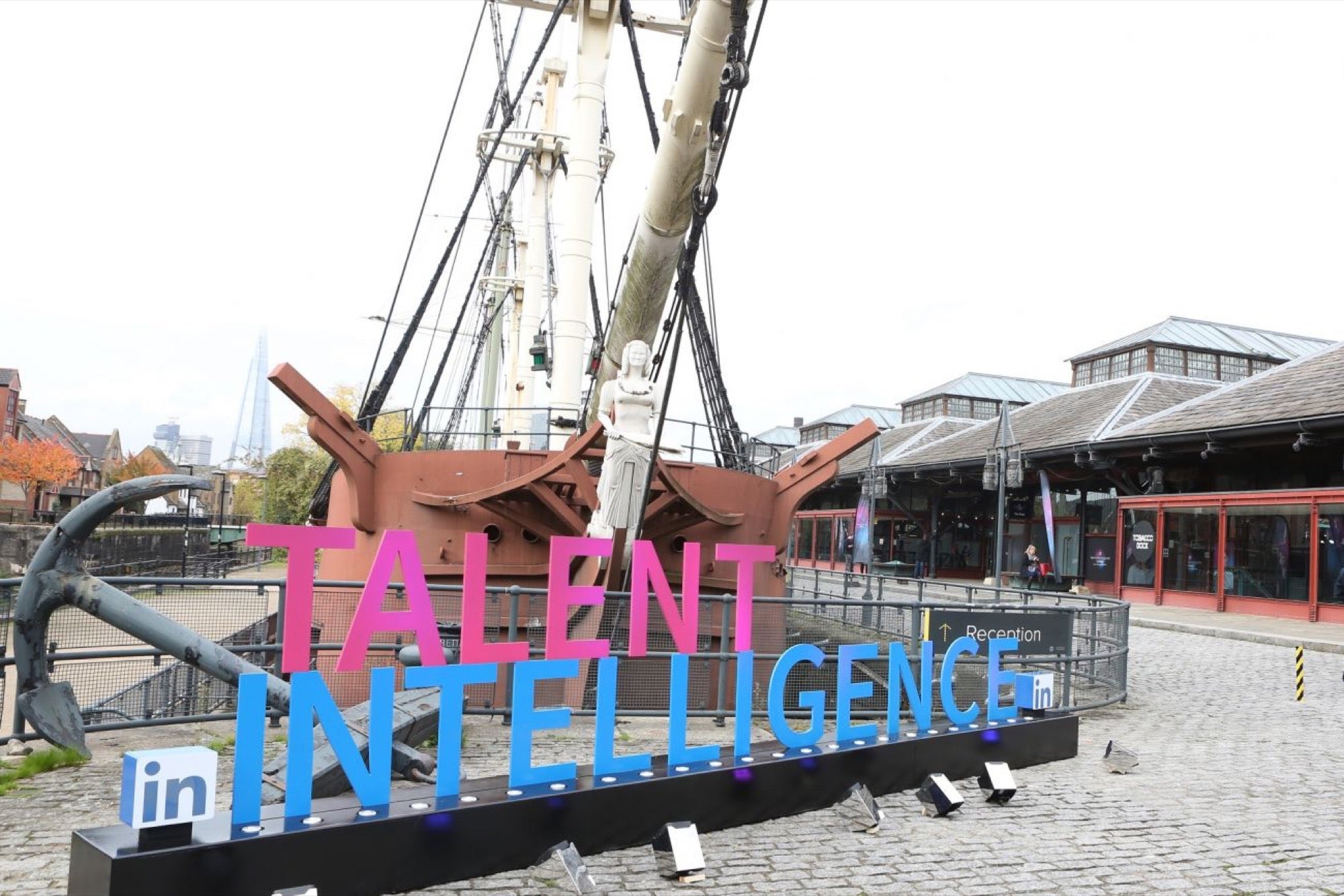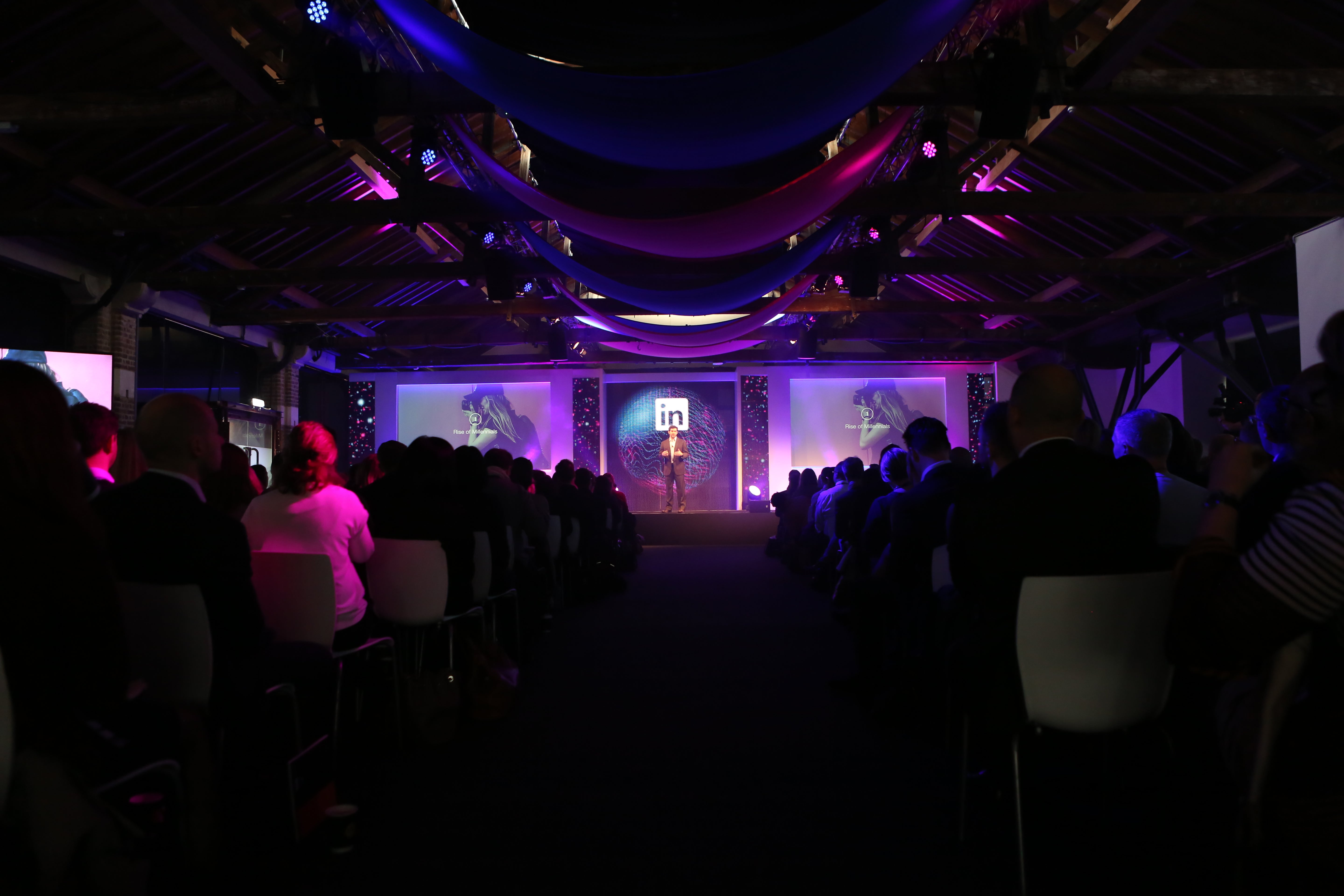The Future Of Hiring, According to LinkedIn LinkedIn's newest offerings look set to make a fundamental change in the world of recruitment.
By Tamara Pupic
You're reading Entrepreneur Middle East, an international franchise of Entrepreneur Media.

LinkedIn CEO Jeff Weiner kicked off the LinkedIn Talent Intelligence Summit, held at London's Tobacco Dock in early November, stating that the three big trends currently shaping the global workforce -AI and automation, skills gaps and the rise of independent work- are about to dramatically transform the way employers hire, develop, and retain talent. And with that in mind, it should come as no surprise that the world's largest professional network on the internet, which has more than 530 million members in over 200 countries and territories (of which more than 166 million are in the EMEA region), will be riding that wave.
In the ensuing series of presentations by the company's top executives, including Dan Shapero, Vice President Talent Solutions, Careers and Learning, John Jersin, Head of Recruiter and Sourcing Products, and Eric Owski, Head of Product, Talent Insights and Talent Brand, LinkedIn, used the event to unveil details of its new Talent Insights product. It is a self-service tool aimed at helping talent professionals in analyzing the activity of LinkedIn's more than 530 million global members by providing two types of insights: The Talent Pool report, providing detailed information on specific populations of talent hiring managers are interested in, and The Company report, showing how well a company is doing at attracting and retaining talent. "We think that heads of talent in companies will be expected to have a deeper understanding of the market landscape of talent around them," Shapero says, as I talked with him on the sidelines of the event. "Until now, there wasn't a good tool to understand the many different information about them, where they work, where they went to school, what they expect to be paid, which companies are winning or losing with them. We believe that this [Talent Insights product] will be the first tool that allows heads of HR and heads of recruiting to answer the key questions that businesses need from them. Before, it was a conversation of opinions, and we believe that we can move it to a conversation of data. And, the holy grail of recruiting measurement is being able to track which sources produce you your top performers."
Source: LinkedIn
While LinkedIn's advanced technological solutions do offer scope for a fundamental change in the world of recruitment, do not fear that a robot will soon have a say in our career trajectory. Indeed, the world's largest professional network actually elevates the human element crucial to making good hires -human instincts- by providing recruiters with relevant data on talent pool and companies to help inform their both short- and long-term talent decisions. LinkedIn says that more than three million talent professionals actively use the network every day, and more than 200,000 use its recruiting tools to discover and hire talent. Furthermore, recruiters spend the majority of their time reviewing applicants' profiles- just on LinkedIn, there are more than 11 million active job listings, while the number of job viewers has increased 70% year-over-year, with more than 20 million job seekers visiting LinkedIn Jobs every week. Of them, nearly 14 million do submit their applications, a 30% increase year-over-year. Little wonder then as to why a carefully selected and invited group of recruiters at the LinkedIn Talent Intelligence Summit was eager to hear how LinkedIn can make their tasks less tedious. "In the recruiting process, there are usually two steps that happen," Shapero explains. "There is a part where a person that is hiring or a recruiter has to find and sort through a long list of names to decide with whom to spend time. They can have thousands of people, of whom some will be applicants to the job while some will be other people they find on LinkedIn. Then, they need to determine which of those people they should really focus on. We think we can help automate and bring intelligence to that step of the process. Once you have 25 or 30 names of people who you think are a great fit, we think there's a lot of instinct required to figure out who is going to be the perfect person and how you are going to persuade that person to join your company. So, the instincts that recruiters have to figure out how to go from that shortlist of people to the one hire, but we can use insights to bring the list down to a small number, versus having recruiters spend a lot of their time on this."
While such intelligent tech offerings are going to definitely help with the hiring process, Shapero believes that recruiters will still need to rely on their instincts, which, supposedly, should never lead them astray, when making decisions on talent. However, Shapero points out that this is actually a learning process, which is enhanced with years of experience. "I think that there are three core areas," he explains. "The first is being able to look at someone's background and see a wider range of options for that person, meaning recognizing a person who has a deeper understanding of what it takes to be great at a certain job. Some people can look at talent and really see the potential in someone, and some people don't have that experience. It does come from experience. The second thing is how to convince a great person to join that company, how to have an instinct on what they care about, what they might be unhappy with, what their current situation is, how to read someone's desires and passions. The third is how to relate to the hiring managers in the company to help them see the potential in a candidate. All three of those things are very human skills, which we can amplify, and make someone more effective- but it is not something an algorithm is going to solve."
In an email interview, Ali Matar, Head of LinkedIn EMEA Emerging Markets, Middle East and Africa, adds that it is important that recruiters show some emotions and praise to the applicants, as their outreach is perceived as a compliment, making them more likeable. He adds that according to LinkedIn's annual talent survey Inside the Mind of Today's Candidate, 94% of candidates are open to new job opportunities and 61% of them feel flattered when recruiters reach out. Furthermore, 58% of people are more likely to respond to a message if it's coming directly from the hiring manger, with the report suggesting that this is due to the increased authority and decision-making ability of someone in that role. "While salary and higher compensation form key components of a discussion with candidates, recruiters shouldn't over-rely on salary to hook the right candidate," Matar explains. "Finding an equilibrium between a suitable paycheck, opportunities for promotion and growth, and a great work-life balance is the key to keeping that talent. If you find that –and with it, give people the chance to feel as though they are appreciated and feel a sense of purpose– then both the candidate and the company will be able to grow harmoniously together. Yet, on most occasions, recruiters focus on "what to look for,' instead of "who to look for,' and LinkedIn is happy to have changed this thinking with tools such as LinkedIn Recruiter that uses smart matching algorithms and talent pool matching that highlight best matching candidates."

Source: LinkedIn
Another product to be launched in 2018 is LinkedIn's hiring platform- an end-to-end hiring solution first presented at the company's annual Talent Connect event in Nashville, Tennessee, in October. It is designed to combine LinkedIn's rich data set, existing sourcing tools and new candidate management technology to bring sourcing, managing and hiring candidates to one place, an option particularly needed by SMEs worldwide. "It's not a service, but a piece of software, so we will not be doing the recruiting for companies as they will still be doing their own recruiting," explains Shapero. "Many companies have Applicant Tracking Systems (ATS), which is where they keep track of all the different applicants that come from LinkedIn or other places where they advertise. One of the ways we are looking at helping those companies that have ATS is through integration, so that if they are looking at a candidate on their own system, they can find out more about them on LinkedIn. And then when they hire someone, that data can go back on LinkedIn, where we will make sure that next time when they try to hire someone that we can get them better candidates faster. Some companies we work with don't have ATS, or the one they use does not integrate well with LinkedIn, so our hiring platform will be a product for them to do end-to-end management of their hiring process."
In this manner, LinkedIn continues to help SMEs attract the right talent and foster the right skills for business growth, while changing the world of talent acquisition forever.
Three Tips To Make Your LinkedIn Profile Stand Out
Ali Matar Head of LinkedIn Talent Solutions, Emerging Markets, Middle East & North Africa
1. Start with a professional photo - "If you don't have a professional headshot, add that to your to-do list, and go with the cleanest, most professional looking snapshot you have- and upgrade as soon as possible. And smile! Remember that a photo is your first handshake with a potential employer."
2. Make your headline standout - "By default, LinkedIn populates your headline with your job title and current company, but you don't have to leave it that way. Consider listing your specialty and speaking directly to your audience. If you want your profile to be searchable, include important keywords. If that's not as big of a concern for you, consider getting away from industry jargon to stand out. Try to keep your headline to about 10 words."
3. Fill out the "summary " field with 5–6 of your biggest achievements - "Use bullets to make this easy to read. Think about your target reader and then paint a picture of how you can make that person's life easier. You can also add media files, including videos, so if you are a speaker or presenter, an introduction video could be a great idea. You don't need to list every single job you have ever had. Instead, only list the jobs that are relevant to your current career goals."
Ali Matar Head of LinkedIn Talent Solutions, Emerging Markets, Middle East & North Africa.
Source: LinkedIn
How to land your next job on LinkedIn
Dan Shapero, Vice President Talent Solutions, Careers and Learning, LinkedIn
1. Have a great profile - "You can start by looking at people that have the job you want and see what kinds of things they talk about. You might want to talk about the same things in order to be found by the same recruiters."
2. Use LinkedIn's Open Talent program - "There you can signal to the recruiting community that you are curious about new opportunities. Ten million people around the world have opted in this program and they get twice as many recruiting messages as the average LinkedIn member. This program allows you not only to signal that you are open to new job opportunities, but also to talk about whether you are open to relocation, to a contract work or just full time, and so on. It is also great for recruiters because these candidates who signal that they are open respond twice the rate. So, it is a win-win for both candidates and employers."
3. Use your network - "Most people get jobs through either people that they know or the people they have met. We try to make it easy for you to use your network by finding jobs where you know people and reaching out to them to get the best chance that you have to be found."
Four Tips For Marketing A New Business
Ali Matar Head of LinkedIn Talent Solutions, Emerging Markets, Middle East & North Africa
1. Start with a strategy - "Incorporate a marketing plan and strategy as you build your business, and know what your goals are before you begin marketing."
2. Tell your story - "Be well versed in telling the story of your business, your product, or your service in a compelling way. Too many startups talk about who they are in terms of features and specifications of the product or service they offer. The focus, rather, should be on why your product/service matters."
3. Listen and take note of what your competitors are doing - "What is working for them? What isn't? What do their customers complain about? What are their unmet needs? Look for ways to incorporate this into your product or service."
4. Utilize social media - "Social media can help you to share your story along with other valuable content, to generate awareness, to build an audience and to engage with them is a strategy."













